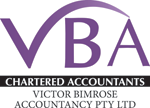When we jump into the business world there are so many new terms to learn and it can be difficult to determine what are the key ones to focus on. From BAS to PAYG, to Cashflow to Profit and Loss. How are you meant to know what to focus on when you may not understand what they are, let alone the impact these figures have on your business? In this article, we are going to explain the differences between the two most important ones, Cash flow and Profit and why they are both important for the long-term success of your business.
Let’s start with cash flow. In short, cash flow is the amount of physical money accessible for your everyday business operations. This includes cash and direct transfers coming in and out of your business. It is extremely important to monitor your cash flow to make sure you have sufficient funds to cover your business expenses. It is usually predicted ahead of time with a Cashflow Budget. Lack of cash flow is the number one reason many small businesses fail in their first 5 years, making it one of the most important areas of your business financials to focus on.
What about profit? Whereas cash flow is the money coming in and out during everyday business operations, profit refers to the amount you are GAINING from the sale of your products and services. It means you are making more money than you are spending.
As a very simple example: You purchase a new product to sell in your shop for $50. You swipe your business card and $50 cash comes out of your business bank account. You then put it in your own shop with a price increase. A customer purchases this item for $110. You now have $110 going into your bank account. These transactions in and out of your bank account are CASHFLOW.
The PROFIT is the difference between the $110 Jenny paid you and the $50 you paid to get the product. So, for this example (when excluding all other operating expenses), your PROFIT on the sale of this item is $60.
While this example is simple, there are many other costs that must be considered before the profit can be calculated correctly. Rent, wages, superannuation, utilities and insurance are examples of other expenses that must be included for the profit to be accurately determined.
Cashflow and Profit are equally important for the long-term success of your business and are, in fact, closely linked. Yes, you must be monitoring that you have enough funds available to cover your business expenses when the invoices arrive but, in the long term, a business cannot survive if it is not gaining money from the sale of its products and services. Essentially, if you are not making an adequate profit, then you will not have enough cash flow. If you do not have adequate cash flow then you may not have the funds to support your business’ growth which, in turn, will affect your profits.
Therefore, knowing the differences between Cashflow and Profit is important, as is regularly monitoring both Cash flow and Profit to ensure the long-term success of your business.
If you need any help with understanding these terms and how they apply to your business, please make an appointment to speak with one of our friendly experts.




